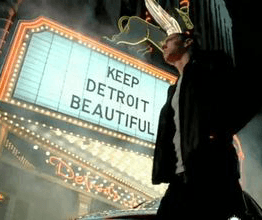The Art & Science of Selecting a Spokesperson

When is tapping a celebrity to endorse your brand a good idea, and who should you choose? In an age when scandals erupt in the time it takes to share a tweet, getting it wrong is at best a wasted opportunity, and at worst a PR nightmare.
It's hard to predict a celebrity scandal. Luckily, consumers tend to forgive brands that take steps to condemn bad behavior (when his doping came to light, Lance Armstrong lost eight contracts in a single day, starting with Nike). But what about wasted opportunities? No marketer wants to invest in a celebrity if a less expensive strategy would work-or to pick the wrong celebrity for the job.
To make the right decision for your brand, before signing any celebrity, make sure that you understand the brand's customer image.
A brand's customer image is the stereotype of the kind of person who uses that brand. It relates to the brand's overall image, but it's not the same. For example, consider Subaru:
- When we ask people to describe the brand Subaru, they say "safe" and "reliable."
- But when we ask them to describe the typical Subaru owner, they say "middle-class," "family-focused," and "outdoorsy." They picture someone with kids and a dog, who likes to hike, and who supported Bernie Sanders in the 2016 presidential primaries.
There's a lot of nuance to their image of the typical Subaru customer-including attributes a person can embody, but a brand cannot.
Customer image is crucial because people are social animals. Our social identities shape what we think, who we are and strive to be, how we act and the choices we make as consumers. So truly strategic brands lead consumers to equate using the brand with joining a tribe that expresses an identity. And the secret to creating that connection is a clear, compelling brand customer image. In our research at CMB we've seen that consumers who identify with their image of a brand's customer are 14-times more likely to choose the brand, and 15-times more likely to recommend it. What does this mean for selecting a celebrity spokesperson?
1. First, get a deep understanding of how your target audience sees the brand customer
Do they already have an image of the kind of person who uses the brand? If so, how compelling is that image? What's working about that image, and what isn't? Which assumptions should you reinforce-and which should you work to change-in order to own a customer image that is compelling and unique for your audience, and realistically attainable for your brand?
2. Consider signing a celebrity if the brand customer image is unclear
Given the importance of the brand customer image, having a new or lesser-known brand may pose a challenge: When your target audience tries to imagine your typical customer, they may draw a blank. On the upside, that means you can build the customer image from scratch-and a celebrity endorsement can provide an effective strategy. In additional to pairing the brand with a familiar face, your campaign can draw on consumers' "built-in" knowledge about the celebrity to communicate what you want them to know about your brand tribe.
3. Consider signing a celebrity if the brand customer image isn't compelling
 Stereotypes are notoriously difficult to change. So it often happens that a brand's (formerly appealing) customer image is no longer relevant-or even alienating-to new consumers. For example, we partner with many respected, longstanding brands that are working to attract younger generations. A key barrier is the image of an "older" customer. The answer isn't to put a Kardashian in every ad (we've all seen how that can go...), but snagging the right celebrity can disrupt preconceived notions about the kind of person who buys the brand. Especially when the endorsement seems genuine. This ad comes to mind as great example for having challenged stereotypes of Chrysler drivers and Detroit.
Stereotypes are notoriously difficult to change. So it often happens that a brand's (formerly appealing) customer image is no longer relevant-or even alienating-to new consumers. For example, we partner with many respected, longstanding brands that are working to attract younger generations. A key barrier is the image of an "older" customer. The answer isn't to put a Kardashian in every ad (we've all seen how that can go...), but snagging the right celebrity can disrupt preconceived notions about the kind of person who buys the brand. Especially when the endorsement seems genuine. This ad comes to mind as great example for having challenged stereotypes of Chrysler drivers and Detroit.
Another great example is the choice of Maya Rudolph by Seventh Generation. Consumers tend to think that people who buy "green" household cleaners are condescending "activist types" who have money to pay a premium for products that don't work well. That's not a compelling tribe. But Maya Rudolph, a comedic actress and a mom, gives Seventh Generation customers an image that's much more relatable and fun. I'm a particular fan of her video promos on the Seventh Generation website.
4. Think twice if the customer image is niche and the goal is to broaden appeal
The image of the Subaru driver shows the impact of ads like this, which have an "every parent" quality. A famous spokesperson could undermine that message. Sometimes signing a celebrity-any celebrity-isn't the best approach. For example, if you're a tech company trying to drive adoption of your intelligent personal assistant, you'll need to battle the perception that typical users are a niche group: young, tech-savvy, affluent, white men.
You may want to show a diverse group of regular people doing regular things with the personal assistant, like Google during this year's Super Bowl-rather than a celebrity doing extraordinary things, like The Rock using Siri to snap selfies from space.

5. If you take the plunge, pick a celebrity who embodies the top priority attributes you want to convey
Picking someone well-known and well-liked may seem like a safe bet. But it fails to consider how that person might influence the image of the brand customer. Instead, identify specific priorities for what to communicate based on consumers' current image of the brand customer, their image of competitor brand customers, and what does (or doesn't) express their identities and values. Then map those priorities to their perceptions of potential spokespeople.
While there's no guaranteeing that a celebrity won't behave badly, at least you can take steps to make sure that you sign a spokesperson who conveys the right image of your brand tribe.
About the Author
 Erica Carranza is VP of consumer psychology at Chadwick Martin Bailey (CMB). She earned her Ph.D. in social psychology from Princeton University and has more than ten years of experience leading research for major brands. Prior to CMB, she spent time in consumers insights at American Express, where she was a recipient of the CMO Award for Achievement in Excellence.
Erica Carranza is VP of consumer psychology at Chadwick Martin Bailey (CMB). She earned her Ph.D. in social psychology from Princeton University and has more than ten years of experience leading research for major brands. Prior to CMB, she spent time in consumers insights at American Express, where she was a recipient of the CMO Award for Achievement in Excellence.
Subscribe to Our Newsletter!
Latest in Marketing








